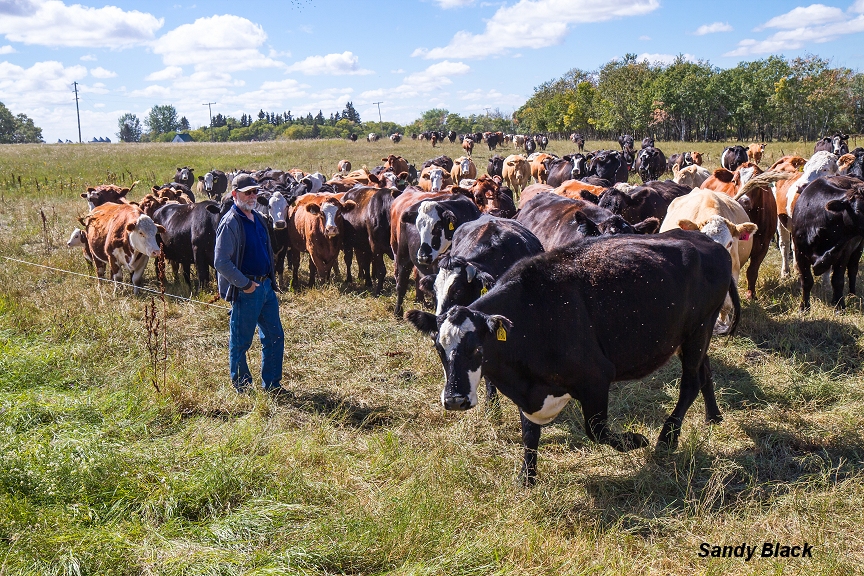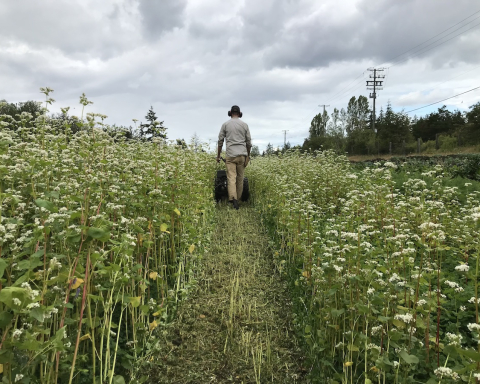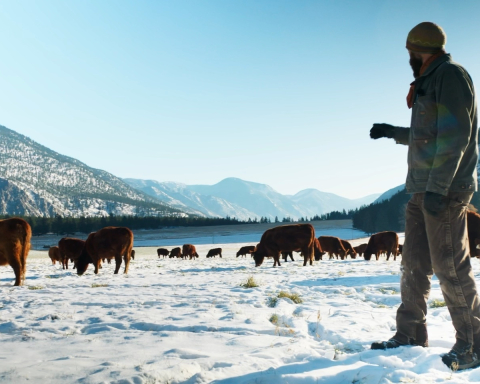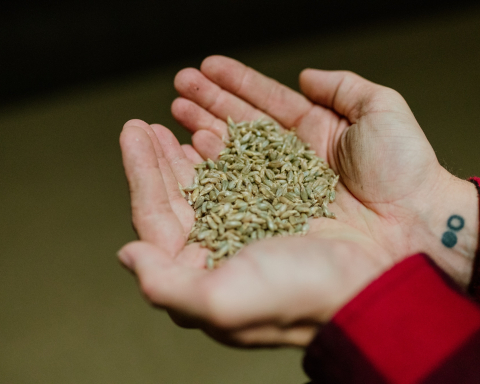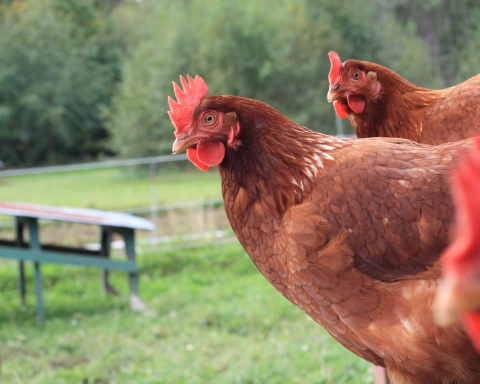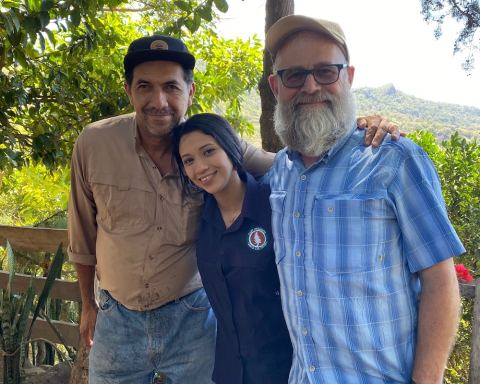Blain Hjertaas
Holistic Management is a decision making system that helps us make better decisions. It teaches us to make decisions that are simultaneously sociologically, environmentally, and economically sound. The end result is happy people, healthy profits, and regenerating soils.
Holistic Management emphasizes principles of regenerating the soil. Our modern industrial approach to agriculture has been a disaster leading to declining nutrient density in food. We consume just over a half tonne of food per year, in the process of producing this food 10 tonnes of soil are lost. Clearly a system of agriculture like this cannot continue.
Holistic Management teaches us the basic principles of regenerative agriculture. How each of us uses these principles is what makes holistic management so unique, as each uses their own creativity to make it work in their own situation.
Principle #1 Solar Capture
To be successful we have to capture sunlight. It is free and non-limiting. There are only three things we can do to increase solar capture: we can make solar panels larger, put more panels up, and leave them turned on longer. On the farm, plant spacing and diversity will largely determine the size and density of the leaves—and in turn how much solar capture is available. We have the potential to capture solar energy from snowmelt to snow arrival (in Saskatchewan, that’s approximately 220 to 250 days). Most annual cropping systems capture solar energy for 70 days of the year. If we are not capturing energy, our soil health is declining. The purpose of solar capture is to send energy to the soil. We need to look at inter cropping, winter crops, poly cropping, etc to increase our harvest of solar energy.
Principle #2 Water Cycle
To make crops grow we need moisture. We have no control as farmers as to how much or when it rains but we have total control as to whether the rainfall is effective (goes into the soil) or not effective (runs off). To make the water cycle effective we need to keep our land covered in litter (green or dead plant material). This absorbs the physical effect of the raindrops and allows them to enter the soil slowly. You can think of the litter layer like the skin on your body. If you have a major burn the consequences can be catastrophic. Litter provides a similar role for the earth. It keeps it warmer in cool times, cooler in warm times, and it allows the moisture to enter and prevents it from evaporating. Moisture is critical for life; to capture and hold it is critical for our success. One of our goals should be to capture every raindrop where it falls.
Principle #3 Mineral Cycle
To have a functioning mineral cycle we need active biology. This occurs when we have solar capture to send sugar down the roots which becomes root exudates. This exudate is the food for the bacteria and fungi. The mycorrhizal fungi physically attach themselves to the root hairs of the plant. In return for the sugar, the fungi get minerals for the plant. These minerals are generally not available to plant; however the mycorrhizal fungi can remove minerals from the soil particles and transport it directly to the plant. This is a synergistic relationship where the plant feeds the fungi and the fungi feeds the plant. This is how nutrient dense food is produced. To have an effective functioning mineral cycle in place, we need to feed the workers below the ground (solar capture) and keep them warm and moist (litter layer and effective water cycle). The bacteria provide many diverse roles from producing enzymes required to being food for the predators which in turn releases nitrogen for the plants. It is wonderfully complex. All we need to do as managers is to foster and enhance and it will continue to get better. All of the living and dying of these billions of organisms is what ultimately sequesters carbon.[DS1]
Principle #4 Community Dynamics
Diversity is wonderful: the more the better. Diversity is not limited to what you plant. Look around; diversity is found in birds, insects, people, animals, and plants. There are synergies between species we do not fully understand. The whole is greater than the sum of its parts: 1+1>2. The challenge becomes how we grow crops that we can harvest mechanically. Poly cropping and inter cropping are becoming new words to farmers as they learn how to put different types of rotations together to harvest the power of this diversity.
How these four principles come together on your farm is up to your creativity. As the four principles are enhanced good things begin to happen. Carbon sequestration begins in the soil. 1 gram of carbon holds 8 grams of water. Increase carbon storage, your farm becomes better able to withstand drought or extreme wet conditions. As carbon increases along with solar capture more life can live below ground. This life below ground increases the nutrient density of the food which is critical for our health. Our requirement for purchased inputs declines and yields go up which certainly helps profitability.
Society will benefit by more nutrient dense food, less infrastructure damage in severe weather events, and carbon being removed from the atmosphere. On my operation in South Eastern Saskatchewan, I have been monitoring soil carbon levels since 2011. I am averaging 22.88 tonnes of CO2 sequestered per hectare per year on a grazing operation. Each Canadian has a carbon footprint of 18.9 tonnes/person/year. Every hectare I operate more than sequesters one Canadian’s carbon footprint.
Regenerative farms provide tremendous value in ecological goods and services to all of society that we are not recognized for. On my 1000 acre operation at a value of $20/ton for CO2, my sequestration value is worth $175,000 per year to society. More water holding and more nutrient dense food and better diversity with endangered grassland birds returning—what value is encompassed there that cannot be quantified?
Holistic Management helps you to make better decisions to achieve the goals that you have for yourself and your family. Along the way your operation should become more profitable and your ecosystem more resilient.
Learn more: holisticmanagement.org
Blain Hjertaas is a Certified Holistic Educator with Holistic Management International. He has 15 years of practical experience using Holistic Management running a 1000 acre grass operation in Saskatchewan, where they also raise lamb, custom graze cows, and poultry. Blain has a passion for carbon sequestration and offers consultations and education on Holistic Management and how the environment functions and how our actions will ultimately influence the ecosystem.
Photo credit: Sandy Black
bhjer@sasktel.net


